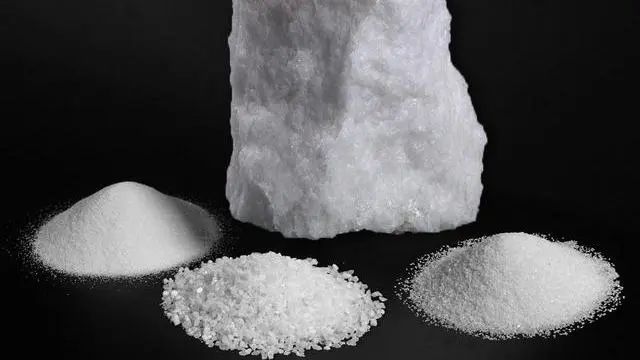White corundum and alumina are both aluminum oxide (Al₂O₃) materials but differ significantly in their properties, production processes, and applications. In this article, we will explain how to distinguish white corundum from alumina, focusing on their key differences in composition, uses, and physical characteristics.

White corundum is a high-purity form of aluminum oxide (Al₂O₃) produced by refining bauxite in an electric arc furnace at high temperatures. The purity and hardness of white corundum make it suitable for abrasive applications, including grinding wheels, polishing, and cutting tools. It is often used where a high degree of precision and surface finish are required, such as in the aerospace and automotive industries.
Alumina is the basic form of aluminum oxide, which can be found naturally as bauxite ore. Alumina is primarily used in the production of aluminum metal through the Bayer process and is also used in the manufacture of ceramics and refractories. Alumina is typically a less refined version of aluminum oxide and is often used in industrial applications that do not require the high purity of white corundum.
Here are the main differences that help to distinguish white corundum from alumina:
White corundum has a higher purity than alumina. It is refined to remove impurities and is often 99% or higher pure, which makes it ideal for use in abrasive and high-performance applications. Alumina, on the other hand, is less refined and may contain impurities like iron oxide, making it less suitable for precision applications.
White corundum is characterized by its hardness (Mohs hardness of 9) and abrasive properties. It is often white or off-white in color. Alumina, however, can appear in a variety of colors, ranging from white to gray or yellow depending on the impurities present. Alumina is also slightly less hard than white corundum, making it more suitable for industrial ceramics and refractories.
White corundum is primarily used as an abrasive material for grinding, polishing, and cutting due to its hardness and sharpness. It is used in the production of abrasive tools like sandpaper, grinding wheels, and polishing pads. Alumina is commonly used in the production of aluminum, as well as in ceramics, refractories, and electronic components. Alumina is often used where high strength and thermal stability are required, but its abrasive properties are not as crucial as in white corundum.
The production of white corundum involves a high-temperature fusion process, often involving bauxite or alumina as a raw material. White corundum is produced by heating alumina in an electric arc furnace, followed by cooling, crushing, and refining. In contrast, alumina is typically produced using the Bayer process, which extracts alumina from bauxite through a chemical process.
| Property | White Corundum | Alumina |
|---|---|---|
| Purity | 99% or higher | Lower purity, contains impurities like Fe₂O₃ |
| Color | White or off-white | White, gray, or yellow depending on impurities |
| Hardness | Mohs hardness 9 (high hardness) | Lower hardness compared to white corundum |
| Main Application | Abrasives, grinding, polishing, cutting | Aluminum production, ceramics, refractories, electronics |
| Production Process | Fusion in electric arc furnace | Extraction from bauxite via Bayer process |
Distinguishing between white corundum and alumina is essential for selecting the right material for a specific application. For example, if a high-performance abrasive is required for precision cutting or grinding, white corundum is the material of choice. On the other hand, alumina is more suitable for ceramics, refractories, and aluminum production.
Yes, white corundum is often used for polishing due to its hardness and abrasive properties. It is commonly used in polishing pads, abrasive discs, and cutting tools to provide a smooth, high-quality finish.
Alumina is primarily used in the production of aluminum metal through the Bayer process. It is also widely used in ceramics, refractories, and electronic components due to its thermal stability and strength.
White corundum is produced by heating alumina in an electric arc furnace at high temperatures (above 2000°C) to refine the material and remove impurities. The cooled material is then crushed and refined into abrasive grains of varying sizes.
Yes, alumina is generally cheaper than white corundum due to its lower purity and simpler production process. However, white corundum is used for more specialized abrasive applications where high performance is required.
Tags: Black Silicon Carbide, White Fused Alumina, Brown Fused Alumina, Pink Fused Alumina, Black Fused Alumina